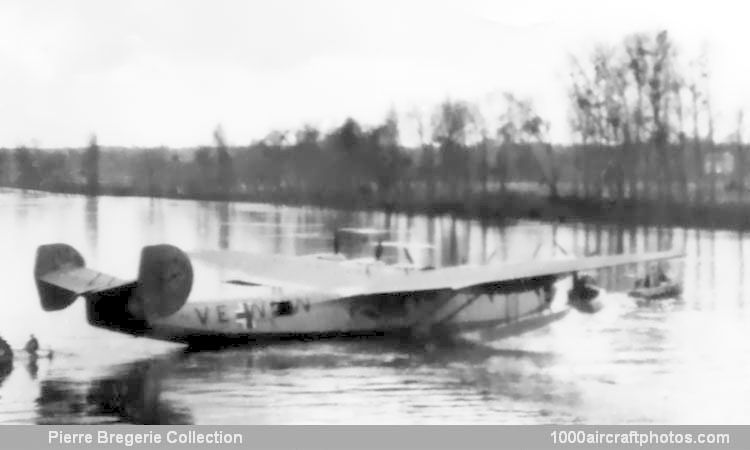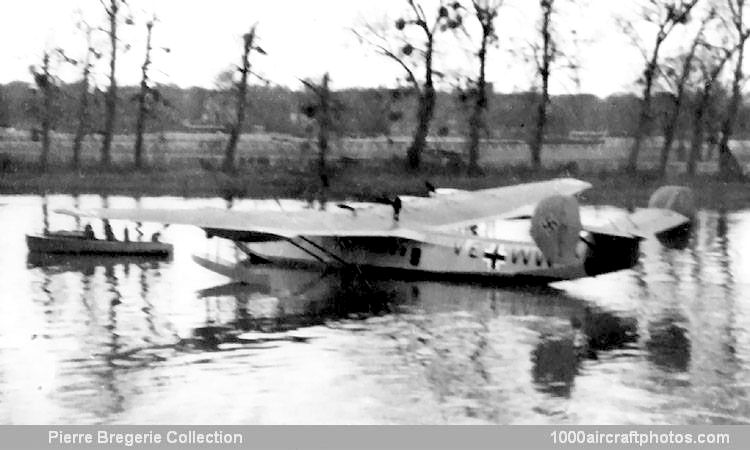10/31/2010. Remarks by
Johan Visschedijk: "The Potez-CAMS 161, designed by a team led by Maurice Hurel, was intended to meet an official French specification of 1934 which called for a large transatlantic flying boat capable of carrying 40 passengers over a distance of 3,728 miles (6000 km) at an average speed of 224 mph (360 kmh) against a 37 mph (60 kmh) headwind. Some freedom of design was given the competing manufacturers, but 99,208 lb (45,000 kg) maximum take off weight and 7,925 gal (30,000 l) fuel limits were imposed. Potez-CAMS responded with the six-engined Type 160 proposal in January 1935.
Three projects were selected for construction, the Potez-CAMS 161, the Lioré et Olivier H-49, and the Latécočre 631. The Potez-CAMS 161 was officially ordered in January 1937, but prior to the commencement of prototype construction a 1 to 2.6 scale flying model was built to prove the aerodynamic and hydrodynamic features of the design. Designated Potez-CAMS 160 and powered by six 40 hp Train four-cylinder air-cooled inverted engines, the tandem two-seat was flown for the first time at Sartrouville on June 10, 1938. Like the full-scale flying boat the Potez-CAMS 160 had retractable stabilizing floats:
The hull, wing and tail assembly of the Potez-CAMS 161 had been completed at Sartrouville in February 1940, the components subsequently being transferred to Le Havre where assembly was resumed in April 1940. Work stopped in June 1940 following the German occupation, but in March 1941 the decision was taken to resume assembly of the flying boat and the components were returned to Sartrouville where the Potez-CAMS 161 was finally completed, being launched on the Seine with the registration F-BAOV in 1941.
However, the prototype sported Luftwaffe insignia and the code
"VE+WW" by the time of the first flight, that was performed by Maurice Hurel on March 20, 1942. It was powered by six 920 hp Hispano-Suiza 12Y twelve-cylinder liquid-cooled V-engines. In 1944 the aircraft wore the German code
"16+11", and was subsequently ferried to the Bug Seaplane Base at the German island Rügen in the Baltic Sea. There it was destroyed on September 18, 1944, by a group of three P-51s of the 375th Fighter Squadron, 361st Fighter Group, led by 20-years old First Lieutenant Urban L. 'Ben' Drew, flying the 'Detroit Miss', a P-51D with s/n 44-14164 (code
"E2-D").
Although full trials were never completed, dimensions and estimated performance were as follows:

